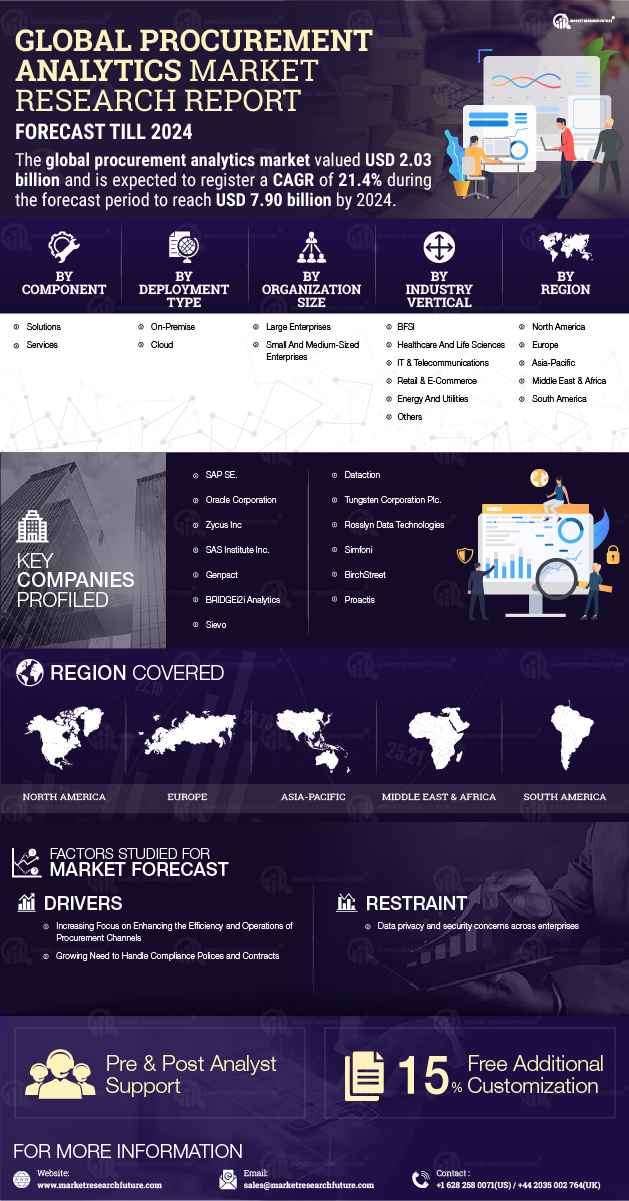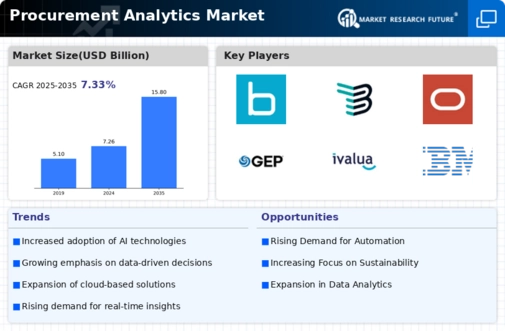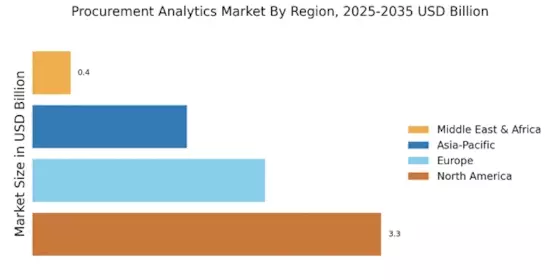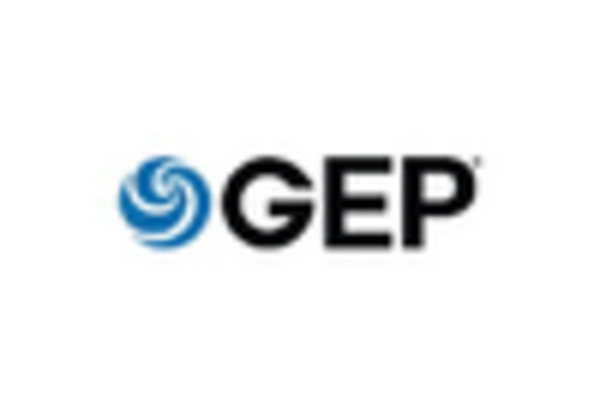Adoption of Cloud-Based Solutions
The shift towards cloud-based solutions is significantly influencing the Procurement Analytics Market. Organizations are increasingly adopting cloud technologies to enhance their procurement capabilities, driven by the need for flexibility, scalability, and accessibility. Cloud-based procurement analytics solutions allow businesses to access real-time data and insights from anywhere, facilitating informed decision-making. Recent statistics suggest that the cloud-based procurement analytics segment is anticipated to grow at a rate of 15% annually. This trend indicates a broader acceptance of digital transformation within procurement functions, as companies seek to leverage cloud technologies to improve collaboration and efficiency. The Procurement Analytics Market is thus likely to expand as more organizations transition to cloud-based analytics platforms.
Increased Focus on Cost Reduction
Cost reduction remains a pivotal driver within the Procurement Analytics Market. Organizations are under constant pressure to minimize expenses while maintaining quality and efficiency. The implementation of procurement analytics enables firms to identify cost-saving opportunities through better supplier selection, contract management, and spend analysis. Recent data indicates that companies utilizing procurement analytics can achieve cost reductions of up to 15% in their procurement processes. This focus on cost efficiency is likely to propel the adoption of analytics solutions, as businesses aim to streamline operations and enhance profitability. Consequently, the Procurement Analytics Market is expected to witness sustained growth as organizations prioritize cost-effective procurement strategies.
Emergence of Advanced Technologies
The emergence of advanced technologies, such as machine learning and artificial intelligence, is reshaping the Procurement Analytics Market. These technologies enable organizations to analyze vast amounts of data more efficiently, uncovering insights that were previously unattainable. The integration of machine learning algorithms into procurement analytics tools allows for predictive analytics, enhancing forecasting accuracy and supplier performance evaluation. As businesses increasingly adopt these advanced technologies, the demand for sophisticated procurement analytics solutions is likely to rise. Recent projections indicate that the market for AI-driven procurement analytics could reach several billion dollars by 2026. This trend underscores the transformative potential of technology in the Procurement Analytics Market, as organizations strive to leverage innovative solutions for competitive advantage.
Regulatory Compliance and Risk Management
Regulatory compliance and risk management are increasingly becoming critical components of the Procurement Analytics Market. Organizations face mounting pressure to adhere to various regulations and standards, necessitating robust analytics solutions to monitor compliance and mitigate risks. Procurement analytics can provide valuable insights into supplier performance, contract compliance, and potential risks associated with procurement activities. As regulatory frameworks evolve, companies are likely to invest in analytics tools that enhance their ability to manage compliance effectively. This focus on risk management is expected to drive growth in the Procurement Analytics Market, as organizations seek to safeguard their operations and maintain compliance in a complex regulatory landscape.
Rising Demand for Data-Driven Decision Making
The Procurement Analytics Market is experiencing a notable surge in demand for data-driven decision making. Organizations are increasingly recognizing the value of leveraging analytics to enhance procurement strategies. According to recent estimates, the market for procurement analytics is projected to grow at a compound annual growth rate of approximately 12% over the next five years. This growth is driven by the need for organizations to optimize their supply chains, reduce costs, and improve overall efficiency. As businesses strive to remain competitive, the integration of advanced analytics tools becomes essential. The Procurement Analytics Market is thus positioned to benefit from this trend, as companies seek to harness data insights to inform their procurement processes and drive strategic initiatives.


















Leave a Comment